现代数字通信
- 格式:docx
- 大小:773.27 KB
- 文档页数:16
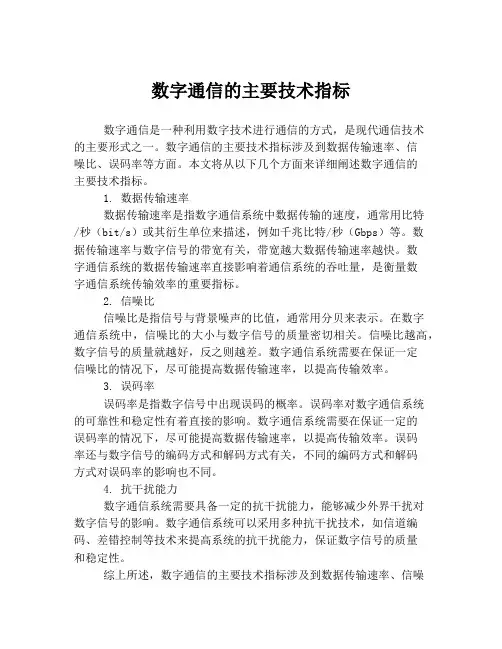
数字通信的主要技术指标数字通信是一种利用数字技术进行通信的方式,是现代通信技术的主要形式之一。
数字通信的主要技术指标涉及到数据传输速率、信噪比、误码率等方面。
本文将从以下几个方面来详细阐述数字通信的主要技术指标。
1. 数据传输速率数据传输速率是指数字通信系统中数据传输的速度,通常用比特/秒(bit/s)或其衍生单位来描述,例如千兆比特/秒(Gbps)等。
数据传输速率与数字信号的带宽有关,带宽越大数据传输速率越快。
数字通信系统的数据传输速率直接影响着通信系统的吞吐量,是衡量数字通信系统传输效率的重要指标。
2. 信噪比信噪比是指信号与背景噪声的比值,通常用分贝来表示。
在数字通信系统中,信噪比的大小与数字信号的质量密切相关。
信噪比越高,数字信号的质量就越好,反之则越差。
数字通信系统需要在保证一定信噪比的情况下,尽可能提高数据传输速率,以提高传输效率。
3. 误码率误码率是指数字信号中出现误码的概率。
误码率对数字通信系统的可靠性和稳定性有着直接的影响。
数字通信系统需要在保证一定的误码率的情况下,尽可能提高数据传输速率,以提高传输效率。
误码率还与数字信号的编码方式和解码方式有关,不同的编码方式和解码方式对误码率的影响也不同。
4. 抗干扰能力数字通信系统需要具备一定的抗干扰能力,能够减少外界干扰对数字信号的影响。
数字通信系统可以采用多种抗干扰技术,如信道编码、差错控制等技术来提高系统的抗干扰能力,保证数字信号的质量和稳定性。
综上所述,数字通信的主要技术指标涉及到数据传输速率、信噪比、误码率和抗干扰能力等方面。
数字通信系统需要在保证可靠性和稳定性的前提下,尽可能提高传输速率和效率。
随着数字通信技术的不断发展,数字通信的主要技术指标也在不断优化和提高,为人们的生活和工作带来了更加便捷和高效的通信方式。
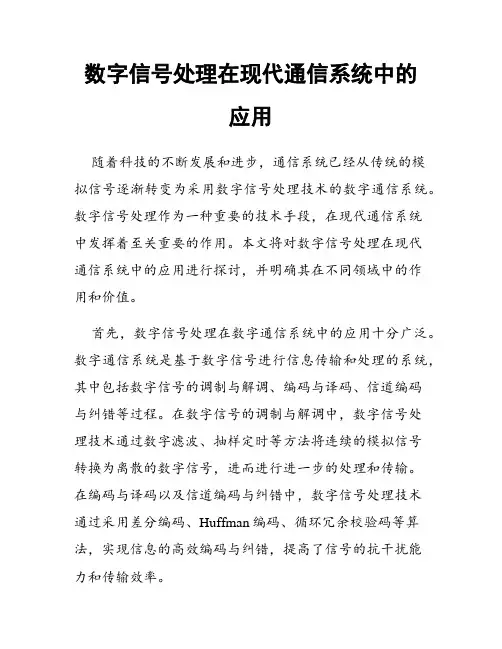
数字信号处理在现代通信系统中的应用随着科技的不断发展和进步,通信系统已经从传统的模拟信号逐渐转变为采用数字信号处理技术的数字通信系统。
数字信号处理作为一种重要的技术手段,在现代通信系统中发挥着至关重要的作用。
本文将对数字信号处理在现代通信系统中的应用进行探讨,并明确其在不同领域中的作用和价值。
首先,数字信号处理在数字通信系统中的应用十分广泛。
数字通信系统是基于数字信号进行信息传输和处理的系统,其中包括数字信号的调制与解调、编码与译码、信道编码与纠错等过程。
在数字信号的调制与解调中,数字信号处理技术通过数字滤波、抽样定时等方法将连续的模拟信号转换为离散的数字信号,进而进行进一步的处理和传输。
在编码与译码以及信道编码与纠错中,数字信号处理技术通过采用差分编码、Huffman编码、循环冗余校验码等算法,实现信息的高效编码与纠错,提高了信号的抗干扰能力和传输效率。
其次,数字信号处理在音频和视频通信系统中的应用也非常重要。
音频通信系统主要包括语音通信、音乐传输等领域。
数字信号处理技术可以应用于音频的压缩编码、降噪、音频效果处理等环节,提高音频的质量和保真度,并实现多媒体的实时传输。
视频通信系统则主要涉及图像和视频的采集、编码、传输和显示等方面。
数字信号处理技术将在视频的压缩编码、图像增强、运动估计等方面发挥重要作用,提高视频的编码效率、图像质量和压缩比率。
数字信号处理在无线通信系统中的应用也非常广泛。
无线通信系统主要包括移动通信、卫星通信、无线局域网等。
数字信号处理技术在无线移动通信系统中的应用主要体现在信号调制与解调、信道均衡、自适应阵列天线等方面。
通过数字信号处理技术,可以提高信号的接收和发送效果,提高系统的容量和覆盖范围。
此外,在卫星通信系统和无线局域网中,数字信号处理技术还能够通过频谱分析、多址技术等手段提高系统的频谱利用率和传输效率。
另外,数字信号处理在雷达和声纳等领域也有广泛应用。
雷达系统通过接收和处理回波信号,实现对目标的探测和跟踪。

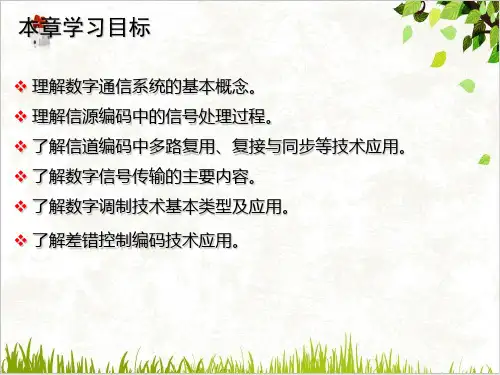

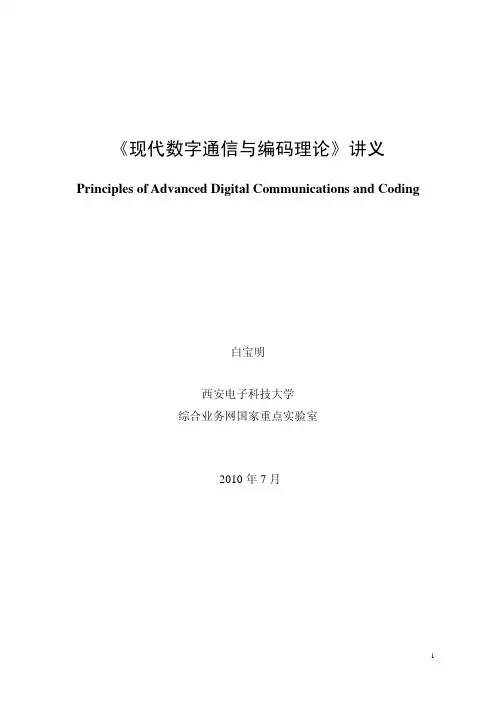
《现代数字通信与编码理论》讲义Principles of Advanced Digital Communications and Coding白宝明西安电子科技大学综合业务网国家重点实验室2010年7月NoticeThis is a draft. The notes are work in progress.Comments will be much appreciated; please send them to me at bmbai@Course Information for 0122229现代数字通信与编码理论(Principles of advanced digital communications and coding)The goal of this class is to introduce the information transmission techniques used in modern communication systems, with emphasis on information-theoretic and advanced coding aspects. This is done by understanding the following course contents:各种信道模型(包括功率受限、带宽受限、ISI、衰落、多天线等)及其Shannon容量的计算;最新的可达容量限的信道码的编译码原理;现代编码通信系统的性能分析技术。
Prerequisite: Principles of communicationsError control coding (preferable but not necessary)Instructor: Prof. Baoming BAIAssistant:Time and place: Monday 8:30 – 10:05 a.m. and Wednesday 3:35 – 5:10 p.m. in Classroom J2-04Grading: 50% Homework50% Project (The project will involve in writing a report as well as an oral presentation)Class WWW page:OutlinePreliminaries- Phase splitter and analytic signal- Complex baseband representation of passband signals- Signal space representations- Circularly symmetric Gaussian processes- Some facts from information theoryDigital Transmission of Information over Ideal AWGN Channels (10 hours) - Discrete-time AWGN channel model- Signal constellation- PAM and QAM transmission systems- Capacity for M-PAM and M-QAM signaling- The gap between uncoded performance and the Shannon limit- Performance analysis of small signal constellations- Design of signal constellationsPerformance Analysis of Coded Communication Systems- Approaching capacity with coding- Techniques for performance analysis of coded communication systems- Bhattacharyya bound and Gallager boundIntroduction to Modern Coding Theory (8 hours)- Trellis representation of codes and decoding on a trellis (linear block codes, V A, BCJR)- Turbo codes and the iterative decoding principles- Performance analysis- Codes defined on graphs and the sum-product algorithm- LDPC codesBandwidth-Efficient Coded-Modulation Techniques (for Ideal Band-limited Channels) (8 hours)- Lattice constellations- Shaping gain- TCM principles and performance analysis techniques- Multi-dimentional TCM and multiple TCM- Turbo-TCM codes- Multilevel coding and multistage decoding- Bit-interleaved coded modulation using Turbo codes and LDPC codes (Gallager mapping)- Constellation shaping techniquesTransmission over Linear Gaussian Channels (6 hours)- Linear Gaussian channels- Equivalent discrete-time model- Principles of “water pouring” and evaluation of the channel capacity- Optimal receiver in the presence of both ISI and AWGN- Optimal detection: MAP, ML sequence detection- Symbol-by-symbol equalization methods: MMSE-LE, ZF-LE and MMSE-DFE - Tomlinson-Harishima precoding- Coding for ISI channels- Principles of Turbo equalizations- Approaching capacity with parallel transmission: COFDMCommunications over Fading Channels (5 hours)- Wireless channel models- Capacity of wireless channels- Diversity techniques- Coding for fading channels (including adaptive coding & modulation)- Bound on the probability of decoding error- Information-theoretic aspects of spread-spectrum communicationsMIMO Wireless Communications (5 hours)- Multi-antenna (MIMO) channel models- Capacity of MIMO wireless channels- Diversity and spatial multiplexing- Approaching capacity with space-time coding- Performance analysis and design criteria for space-time codes on fading channels - Various space-time coding schemesReferences[1]C. E. Shannon, “A mathematical theory of communication,” Bell Syst. Tech. J., vol. 27,pp. 379-423, 623-656, July-Oct. 1948; Reprinted in C. E. Shannon and W. Weaver, The Mathematical Theory of Communication. Urbana, IL: Univ. Illinois Press, 1949.[2]R. G. Gallager, “Claude E. Shannon: A Retrospective on His Life,Work, and Impact,”IEEE Trans. Inform. Theory, vol.47, no.7, pp. 2681-2695, Nov. 2001.[3]G. D. Forney, Jr. and G. Ungerboeck, “Modulation and coding for linear Gaussianchannels,” IEEE Trans. Inform. Theory, vol.44, no.6, pp. 2384-2415, Oct. 1998.[4]E. Biglieri, J. Proakis, and S. Shamai (Shitz), “Fading channels: Information-theoreticand communication aspects,” IEEE Trans. Inform. Theory, vol.44, pp.2619-2692, Oct.1998.[5]D. J. Costello, J. Hagenauer, H. Imai, and S. B. Wicker, “Applications of error-controlcoding,” IEEE Trans. Inform. Theory, vol.44, no.6, pp.2531-2560, Oct. 1998.[6]A. R. Calderbank, “The art of signaling: Fifty years of coding theory,” IEEE Trans.Inform. Theory, vol.44, no.6, pp.2561-2595, Oct. 1998.[7]J. G. Proakis, Digital Communications. 4rd ed. New York: McGraw-Hill, 2000.[8]E. A. Lee and D. G. Messerschmitt, Digital Communication, 2nd ed. Kluwer AcademicPublishers, Boston, 1994.[9]G. D. Forney and R. Gallager, Principles of Digital Communications. Course notes.MIT.[10]R. G. Gallager, Information Theory and Reliable Communication. New York: JohnWiley and Sons, 1968.[11]T. M. Cover and J. A. Thomas, Elements of Information Theory. Wiley, 1991.[12]J. L. Massey, Applied Digital Information Theory. Course notes. ETH.[13]S. G. Wilson, Digital Modulation and Coding. Prentice-Hall, 1996.[14]E. Biglierli, D. Divsalar, P. J. McLane, and M. K. Simon, Introduction to Trellis-CodedModulation with Applications. New York: MacMillan, 1991.[15]D. N. C. Tse and P. Viswanath, Fundamentals of Wireless Communication. CambridgeUniversity Press, 2005.[16]A. Goldsmith, Wireless Communications. Cambridge University Press, 2005.[17]T. J. Richardson and R. L. Urbanke, Modern Coding Theory. Course notes. EPFL.[18]C. Schlegel and L. Perez, Trellis and Turbo Coding. IEEE Press, 2004.[19]P roceedings of The IEEE, Special issue on wireless commun., vol.92, no.2, Feb. 2004.[20]I EEE Signal Processing Magazine, Jan. 2004.[21]I EEE Communication Magazine, Aug. 2003.[22]M. Medard and R. G. Gallager, “Bandwidth scaling for fading multipath channels,”IEEE Trans. Inform. Theory, vol.48, no.4, pp.840-852, April 2002.[23]I. C. Abou-Faycal, M. D. Trott, and S. Shamai (Shitz), “The capacity of discrete-timememoryless Rayleigh-fading channels,” IEEE Trans. Inform. Theory, vol.47, no.4, pp.1290-1301, May 2001.[24]E. Biglieri, G. Caire, and G. Taricco, “Limiting performance of block-fading channelswith multiple antennas,” IEEE Trans. Inform. Theory, vol.47, no.4, pp.1273-1289, May 2001.[25]G. J. Foschini and M. J. Gans, “On limits of wireless communications in a fadingenvironment when using multiple antennas,” Wireless Personal Communications, vol.6, no.3, pp.311-335, Mar. 1998.[26]I. E. Telatar, “Capacity of multi-antenna Gaussian channels,” European Trans.Telecomm., vol.10, no.6, pp.585-596, Nov.-Dec. 1996.[27]C. Berrou and A.Glavieux, “Near optimum error correcting coding and decoding:Turbo-codes,” IEEE Trans. Commun., vol. 44, no.10, pp.1261-1271, Oct. 1996.[28]C. Heegard and S. B. Wicker, Turbo Coding, Norwell, MA: Kluwer, 1998.[29]B. Vucetic and Jinhong Yuan, Space-Time Coding, Wiley, 2003.[30]S hu Lin and D. J. Costello, Jr. Error Control Coding: Fundamentals and Applications.2nd ed. Prentice-Hall, 2004.[31]W illiam E. Ryan and Shu Lin, Channel Codes: Classical and Modern. CambridgeUniversity Press, 2009.[32]P roceedings of The IEEE, Special issue on Turbo-information processing: Algorithms,implementations and applications, vol.95, no.6, June 2007.0122229 现代数字通信与编码理论 September 1, 2010 XDU, Fall 2010 Lecture NotesIntroductionDigital communication is a field in which theoretical ideas have had an unusually powerful impact on actual system design. The basis of the theory was developed 58 years ago by Claude Shannon, and is called information theory. The goal of this course is to get acquainted with some of these ideas and to gain deep understanding on how to efficiently and reliably communicate through a channel, especially to better understand the advanced techniques for signal transmission and coding used in modern digital communication systems. We will focus on point-to-point systems consisting of a single transmitter, a channel and a receiver.A.Block diagram of a digital communication systemIn 1948, Claude E. Shannon of the Bell Telephone Laboratories published one of the most remarkable papers in the history of engineering. This paper (“A Mathematical Theory of Communication", Bell System Tech. Journal, Vol. 27, July and October 1948, pp. 379 - 423 and pp. 623 - 656) laid the groundwork of an entirely new scientific discipline, “information theory", in which Shannon first introduced the following figure to model a digital communication system.Channel encoderThe source encoder involves the efficient representation of source signals. It has the function of converting the input from its original form, e.g., speech waveforms, image waveforms, and text, into a sequence of bits. The objective of doing this is as efficiently as possible. i.e., transmitting as few bits as possible, subject to the need to reconstruct the input adequately at the output. In this case source encoding is often called data compression. Shannon showed that the ultimate data compression is the entropy of the source.The channel encoder box in the figure above has the function of mapping the binary sequence at the source/channel interface into channel inputs. The channel inputs might be waveforms, or might be discrete sequences. The general objective here is to map binary inputs at the maximum bit rate possible into waveforms or sequences such that the channel decoder can recreate the original bits with low probability of error. One simple approach to performing this is called modulation and demodulation. From the geometric signal-space viewpoint, the modulation process may be thought of a two-step process: first mappingbinary digits into signals (e.g. signal levels) and then signals into waveforms.Since high error probability is frequently incurred with simple modulation and demodulation in the presence of noise, the error-correcting codes was introduced and the channel coder is separated into two layers, first an error-correcting encoder, and then a simple modulator. Shannon showed that, with appropriate coding schemes, arbitrarily low error probabilities can be achieved at any data rate below a certain data rate called the channel capacity.By the 1980’s, channel coding usually involved a two layer system similar to that above, where an error-correcting code is followed by a modulator. At the receiver, the waveform is first demodulated, and then the error correction code is decoded. Since the Ungerboeck’s work in 1982, it has been recognized that coding and modulation should be considered as a unit, resulting in the schemes called coded modulation. In such schemes, the lower error probability can be achieved without sacrificing bandwidth efficiency.“The purpose of the modulation system is to create a good discrete channel from the modulator input to the demodulator output, and the purpose of the coding system is to transmit the information bits reliably through this discrete channel at the highest practicable rate.” -- MasseyIn this course, we will study the concepts and fundamental principles involved in advanced digital communication systems. We will focus on the channel coding component in the above figure. As we will see later, many advanced techniques used in modern digital communication systems (including mobile communication systems) are developed using information-theoretic ideas. This course will attempt to reflect these new evolutions. Some of exposition has benefited from the excellent notes written by Gallager and Forney for the MIT courses 6.450 and 6.451.We will present the material in such a unified way that the channel model and the corresponding channel capacity are introduced first, and then the coding and signal process techniques for approaching these optimal performance limits are presented, and followed by the discussion on the performance of the actual systems with these channel coding schemes. B.Relevant results from information theoryThe communications problem can be broken down without loss of reliability or efficiency into the separate components shown in the above diagram.Reliable communication can be achieved at any rate below the capacity of the communications channel.We add controlled redundancy to data transmitted over the channel. This redundancy lowers the raw data rate, but reduces the error rate after using theredundancy to correct errors. (distance gain)The net effect is to increase the rate at which clean data is deliveredC.Historical notes•Hamming codes: 1950• Convolutional codes: 1955 (by Elias)•BCH, Reed-Solomon codes: 1960•LDPC codes: 1962 (by Gallager) (rediscoved in late 1990’s)•Concatenated codes: 1966 (by Forney)•Viterbi algorithm: 1967•TCM: 1982 (by Ungerboeck)•Turbo codes: 1993 (by Claude Berrou)•Space-time codes: 1998 (by V. Tarokh)•Dirty-paper coding, Cooperation via distributed coding and network coding: 2000- Most of important achievements in digital communications are based on the results of information theory and coding.D.Giants in the field of digital communicationsHarry Nyquist (1928)•Analog signals of bandwidth W can be represented by 2W samples/s• Channels of bandwidth W support transmission of 2W symbols/sClaude Shannon (1948)4/30/1916 – 2/24/2001•His information theory addressed all the big questions in a single stroke.•He thought of both information sources and channels as random and used probability models for them.•Most modern communication systems are designed according to the principles laid down by Shannon.We conclude this section, which should have provided some motivation for the use of coding, with an adage from R. E. Blahut: “To build a communication channel as good as we can is a waste of money – use coding instead!”0122229 现代数字通信与编码理论 September 1, 2010 XDU, Fall 2010 Lecture NotesChapter 1 PreliminariesIn this chapter we will briefly review some basic concepts and principles, which will be used as the basis of discussions later.A. Phase splitter and analytic signalIf x (t ) is a real-valued signal, then its Fourier transform X (f ) satisfies the symmetryproperty*()()X f X f −=where X *(f ) is the complex conjugate of X (f ).The symmetry property says that knowing X (f ) for f ≥ 0 is sufficient to entirely describe X (f ) and thus to describe x (t ).A phase splitter (also known as Hilbert filter) is a complex filter with impulseresponse h +(t ) and transfer function H +(f ), where⎩⎨⎧<≥=+0 ,00 ,1)(f f f HFigure 1.0 A Hilbert filterIf the real-valued input to a phase splitter is x (t ), then the output isˆ()()()]A x t x t jx t =+, or ()()()A X f f H f +=where ˆ()x t is the Hilbert transform of x (t ). We introduce the factor so that x (t ) and x A (t ) have the same energy (or power). Notice that x A (t ) is a complex-valued signal.A signal with only nonnegative frequency components is called an analytic signal . x (t ) can be recovered from x A (t ) by[]()()A x t x t =B. Complex baseband representation of passband signalsSuppose that x (t ) is a real-valued passband signal with a spectrum centered at f = f c .The complex baseband equivalent signal (sometimes also called complex envelope) of x (t ) can be represented as2b()c j f t x t π−=(1.1) x A (t )In terms of Fourier transforms(), 0()()0, 0c c b A c c f f f f X f X f f f f ++≥=+=+<⎪⎩The original passband signal can be recovered from x b (t ) by2()()c j f tb x t x t e π⎡⎤=⎣⎦ (1.2)The relationship between (),() and ()A b x t x t x t is shown in Fig. 1.1 in terms of theirspectrum.-f cf c0c0 W /2Figure 1.1 Fourier transform of a passband signal x (t ) and the transform of the correspondingcomplex baseband signal.Baseband to passband and go back⊗2c j fteπ2c j f teπ−0c calternativeFigure 1.2Baseband equivalent channel (at carrier frequencyf c )ˆ()()()]A h t h t jh t =+2()()c j f t b A h t h t e π−=An alternative representation of a real signal is derivative of the complex enveloperepresentation. The real and imaginary parts of the complex envelope ()b x t are referred to as the in-phase and quadrature components ofx (t ), respectively, and are denoted by (){()}I b x t x t =R and (){()}Q b x t x t =I . From (1.2), we have the x (t ) given by2()()c j f tb x t x t e π⎡⎤=⎣⎦[][]()cos(2)()sin(2)b c b c x t f t x t f t ππ=−()cos(2)()sin(2)I c Q c t f t t f t ππ=− (1.3)A quadrature modulator performing upconversion and a quadrature demodulatorperforming downconversion are shown in Fig. 1.3, respectively.Figure 1.3 Quadrature modulation and demodulationC. A complete system diagramThe next step in implementing a digital communication system is to convert the discrete-time signal sequence into a baseband waveform (such as a PAM or QAM modulated waveform), and vice versa. This is performed via baseband modulation and demodulation. For example, with QAM transmission, the baseband complex waveform can be expressed as()()()()b n nn nn x t x p t nT x jx p t nT ∈′′′=−=+−∑∑Zwhere {x n } is a discrete-time sequence of complex symbols to be transmitted, T is the symbol interval/duration, and {}nn x x ′=R and {}n n x x ′′=I . The real waveform p (t ) is a basic modulation pulse. At the receiver, the sequence {x n } can be retrieved from the sampled outputs ()n b y y nT =. Figure 1.4 shows a complete system diagram with ()sinc()p t t = which is defined assin()sinc()=tt t ππFigure 1.4 A complete system diagram from the baseband transmitted symbol to the baseband receivedsymbol.D. Signal space representationsA signal space is a linear space (or vector space) in which vectors represent signals. In an n -dimensional complex vector space n C , the inner product of two vectors1(,...,)n u u =u and 1(,...,)n v v =v is defined as*1,ni i i u v ==∑u vA vector space equipped with an inner product is called an inner product space . A special notation is used for <u , v >,221,||||||ni i u ===∑u u uwhere ||u || is called the norm of vector u and geometrically is the length of the vector.Two vectors u , v are said to be orthogonal if <u , v > = 0.Schwarz inequality: Let u and v be vectors in an inner product space (either onor R C ). Then,||||||||≤⋅u v u vOrthonormal bases: In an inner product space, a set of vectors 12,,...φφ isorthonormalif1, for ,0, for j k jk j kj k δ=⎧==⎨≠⎩φφOne dimensional projections: The vector u can be viewed as the sum of two vectors|⊥=+v v u u uwhere |v u is collinear with v , and ⊥v u is orthogonal to v . The vector |v u is called the projection of u onto v .Finite dimensional projections: If S is a subspace of an inner product space V , andV ∈u , the projection of u on S is defined to be a vector |S S ∈u such that|,0S −=u u v for every vector S ∈v .Figure 1.5Projection theorem : Let S be an n -dimensional subspace of an inner product space Vand assume that 12,,...,n φφφ is an orthonormal basis for S . Then any V ∈u maybe decomposed as |S S ⊥=+u u u , where |S S ∈u and ,0S ⊥=u v for all S ∈v . Futhermore, |S u is uniquely determined by|1,nS j j j ==∑u u φφA consequence of projection theorem is that the projection |S u is the unique closestvector in S to u ; that is, for all S ∈v ,|||||||||S −≤−u u u v with equality iff v =|S u . See figure 1.5.Gram-Schmidt orthogonalization procedure : It produces an orthonormal basis {φj }for an arbitrary n -dimensional subspace S with the original basis s 1,…, s n . See, e.g., [Proakis 2000, ch4] for details.E. Circularly symmetric Gaussian processesA vector X with M jointly Gaussian real-valued random variables has the p.d.f.11()()()2T p K −⎛⎞=−−−⎜⎟⎝⎠X X X X x x m x m where [()()]T K E =−−X X X x m x m is the covariance matrix, and []E =X m x isthe vector mean.A complex-valued Gaussian random process consists of two jointly Gaussianreal-valued processes, a real part and an imaginary part. By jointly Gaussian, we mean that any arbitrary set of samples of real and imaginary parts is a jointly Gaussian set of random variables.Let Z (t ) be a zero mean complex-valued Gaussian process. Let R (t ) = R [Z (t )] and I (t ) = I[Z (t )]. By definition, both R (t ) and I (t ) are zero mean real Gaussian processes.Thus, R (t ) and I (t ) are fully characterized by their 2nd order statistics,()[()()]R R R t R t ττ=+E , ()[()()]I R I t I t ττ=+E , ()[()()]RI R R t I t ττ=+EThe complex-valued process Z (t ) is strictly stationary if R (t ) and I (t ) are jointly wise-sense stationary , and hence jointly strictly stationary.By definition, the complex-valued process Z (t ) is wise-sense stationary if the autocorrelation function*()[()()]Z R Z t Z t ττ=+Eis independent of t .Notice that this is not the same as saying that the real and imaginary parts are jointly wide-sense stationary, since ()Z R τ could not by itself contain informationequivalent to ()R R τ, ()I R τ and ()RI R τ.Thus, we require more than ()Z R τ to fully specify the statistics of Z (t ). In addition to ()Z R τ, it suffices to know the complementary autocorrelation function defined as()[()()]ZR Z t Z t ττ=+ EUsing the relations 2R (t ) = Z (t ) + Z *(t ) and 2jI (t ) = Z (t ) - Z *(t ), it is easy to show that2()Re{()}Re{()}R Z ZR R R τττ=+ 2()Re{()}Re{()}IZZR R Rτττ=− 2()Im{()}Im{()}RI Z ZR R R τττ=−With these equations, we can see that if Z (t ) is wise-sense stationary, and in addition ()ZR τ is not a function of t , then R (t ) and I (t ) are jointly wise-sense stationary, and Z (t ) strictly stationary.Circularly symmetric Gaussian random variables : Let Z = R + jI be a zero mean Gaussian variable. Z will be called circularly symmetric if222[][][]2[]0Z R I j RI =−+=E E E ENote that R and I are i.i.d. iff 2[]0Z =E .The source of the terminology: j e Z φ has the same distribution as Z . It is22||||()2Z z p z σ⎧⎫=−⎨⎬⎩⎭A complex-valued zero mean Gaussian process is circularly symmetric if[()()]0Z t Z t τ+=E for all t and τProperty :- A circularly symmetric Gaussian process is strictly stationary iff it is wide-sense stationary.- For a wide-sense stationary circularly symmetric Gaussian process,1()()Re{()}2R I Z R R R τττ==, 1()Im{()}2RI Z R R ττ=− - Circularly symmetric processes with a real-valued ()Z R τ have a real and imaginary part that are independent at all time, since R RI (τ) = 0.- Circularly symmetry is preserved by linear (time-invariant or time-varying) systems.A white complex-valued Gaussian process has an autocorrelation function0()()Z R N τδτ=, 2()2Z k R k σδ=for continuous and discrete time, respectively.For a circularly symmetric white Gaussian process, the real and imaginary parts areidentically distributed, and are independent of each other.D. Basics of information theory Entropy and mutual informationFor a discrete random variable X with sample space ΩX , its entropy is defined as()[log ()]()log ()XX X X x H X P x P x P x ∈Ω=−=−∑EThe mutual information between two random variables X and Y are given by(,)()(|)()(|)I X Y H X H X Y H Y H Y X =−=−Channel capacity and the coding theorem(Operational) Channel capacity:Maximum rate R for which reliable communication can be achieved.Information channel capacity:Maximum of mutual information over all possible input statistics P (X )Suggested Reading[1] R. G . Gallager, Principles of Digital Communication . Cambridge University Press, 2009.(影印版,人民邮电出版社,2010)max (;)max [()(|)]XXP P C I X Y H Y H Y X ≡=−()()(;)()()logx y p y x I X Y p x p y x p y =∑∑()(;)()()log xp y x I X Y p x p y x dyp y ∞−∞=∑∫()(;)()()logp y x I X Y p x p y x dxdy p y ∞∞−∞−∞=∫∫。
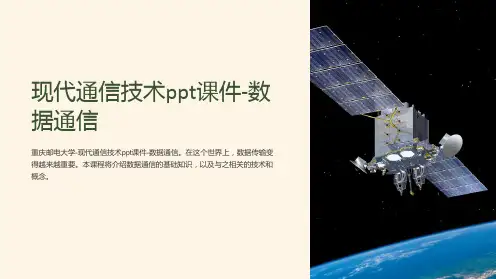
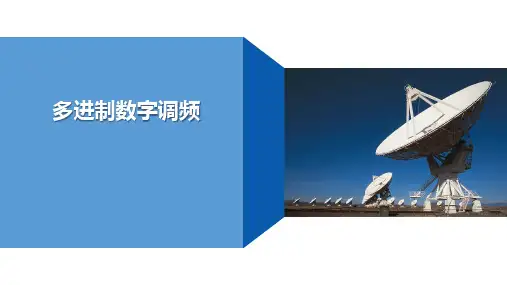
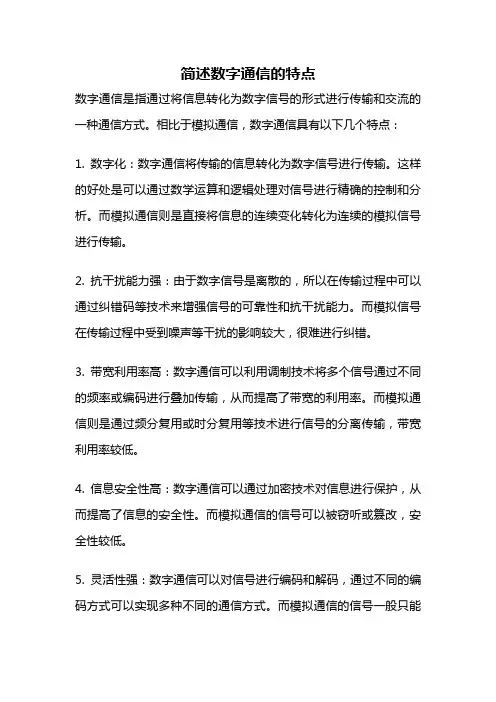
简述数字通信的特点数字通信是指通过将信息转化为数字信号的形式进行传输和交流的一种通信方式。
相比于模拟通信,数字通信具有以下几个特点:1. 数字化:数字通信将传输的信息转化为数字信号进行传输。
这样的好处是可以通过数学运算和逻辑处理对信号进行精确的控制和分析。
而模拟通信则是直接将信息的连续变化转化为连续的模拟信号进行传输。
2. 抗干扰能力强:由于数字信号是离散的,所以在传输过程中可以通过纠错码等技术来增强信号的可靠性和抗干扰能力。
而模拟信号在传输过程中受到噪声等干扰的影响较大,很难进行纠错。
3. 带宽利用率高:数字通信可以利用调制技术将多个信号通过不同的频率或编码进行叠加传输,从而提高了带宽的利用率。
而模拟通信则是通过频分复用或时分复用等技术进行信号的分离传输,带宽利用率较低。
4. 信息安全性高:数字通信可以通过加密技术对信息进行保护,从而提高了信息的安全性。
而模拟通信的信号可以被窃听或篡改,安全性较低。
5. 灵活性强:数字通信可以对信号进行编码和解码,通过不同的编码方式可以实现多种不同的通信方式。
而模拟通信的信号一般只能通过特定的方式进行传输。
6. 兼容性好:数字通信可以通过数字化的方式将不同类型的信号进行统一处理,从而实现不同设备之间的互联互通。
而模拟通信在不同设备之间往往需要进行复杂的接口转换。
总结来说,数字通信相比于模拟通信具有抗干扰能力强、带宽利用率高、信息安全性高、灵活性强和兼容性好等特点。
这些特点使得数字通信在现代通信领域得到广泛应用,包括电话、互联网、移动通信等各个方面。
数字通信的发展不仅改变了人们的生活方式,也推动了社会的信息化进程。
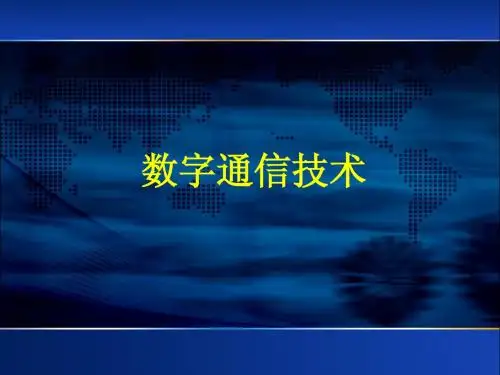
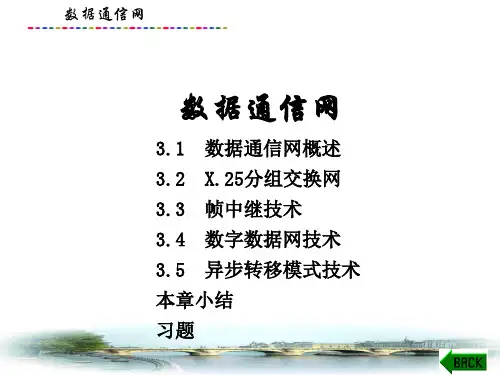
数字通信和模拟通信对比介绍数字通信和模拟通信是现代通信领域中两种主要的通信方式。
数字通信是指将传输的信息进行数字化处理并以二进制形式进行传输的通信方式,而模拟通信是指以连续变化的模拟信号进行传输的通信方式。
本文将从信号形式、传输方式、系统复杂度和应用范围等方面对数字通信和模拟通信进行对比介绍。
数字通信和模拟通信在信号形式上存在明显的差异。
在数字通信中,信息经过采样、量化和编码等处理步骤,最终以离散的二进制形式表示。
而在模拟通信中,信息以连续的模拟信号形式表示。
由于数字信号具有离散性和二进制特点,可以更好地抵抗噪声和干扰,提高信号的可靠性和抗干扰能力。
数字通信和模拟通信在传输方式上也有所不同。
数字通信采用的是基带传输方式,即将数字信号直接传输到接收端进行解码和恢复。
而模拟通信则采用的是调制传输方式,即将模拟信号经过调制处理后再传输到接收端进行解调和恢复。
调制传输方式可以在一定程度上提高信号的传输效率和传输距离。
第三,数字通信和模拟通信在系统复杂度方面也存在差异。
数字通信系统需要进行信号的采样、量化、编码、解码等复杂处理过程,同时还需要进行误码控制和信道编码等技术的应用,系统复杂度较高。
而模拟通信系统相对简单,主要是通过调制和解调技术实现信号的传输和恢复,系统复杂度相对较低。
数字通信和模拟通信在应用范围上也有所差异。
数字通信广泛应用于现代通信系统中,如移动通信、互联网、数字电视等领域。
数字通信具有灵活性强、传输容量大、抗干扰能力强等优点,可以满足现代通信对高质量传输的需求。
而模拟通信主要应用于传统的广播电视、语音通信等领域,由于模拟信号受到噪声和干扰的影响较大,传输质量相对较低。
数字通信和模拟通信是两种不同的通信方式,它们在信号形式、传输方式、系统复杂度和应用范围等方面存在差异。
数字通信具有抗干扰能力强、传输容量大等优点,广泛应用于现代通信系统;而模拟通信相对简单,主要应用于传统的广播电视、语音通信等领域。
一、实验目的1. 了解现代通信技术的基本原理和主要设备。
2. 掌握模拟通信和数字通信的基本概念及区别。
3. 通过实验,熟悉通信系统的基本组成和功能。
4. 培养实验操作能力和分析问题的能力。
二、实验原理现代通信技术主要包括模拟通信和数字通信两种。
模拟通信是指将信息以模拟信号的形式进行传输,而数字通信则是将信息以数字信号的形式进行传输。
本实验将重点探讨数字通信技术。
数字通信系统主要由信源、信道、信宿和编码解码器组成。
信源产生原始信息,编码解码器将信息进行数字编码和解码,信道用于传输信息,信宿接收并处理信息。
三、实验内容1. 模拟通信实验- 实验目的:了解模拟通信系统的基本组成和原理。
- 实验内容:观察模拟调制解调过程,分析调制解调器的工作原理。
2. 数字通信实验- 实验目的:了解数字通信系统的基本组成和原理,掌握数字调制解调技术。
- 实验内容:- 观察数字调制解调过程,分析调制解调器的工作原理。
- 对比模拟通信和数字通信系统的性能差异。
3. 误码率测试实验- 实验目的:了解误码率的概念,掌握误码率测试方法。
- 实验内容:- 通过实验,测试数字通信系统的误码率。
- 分析误码率产生的原因及解决办法。
四、实验步骤1. 模拟通信实验- 搭建模拟通信系统,包括信源、信道、信宿和调制解调器。
- 观察调制解调器的工作过程,分析其工作原理。
- 对比模拟通信和数字通信系统的性能差异。
2. 数字通信实验- 搭建数字通信系统,包括信源、信道、信宿和编码解码器。
- 观察编码解码器的工作过程,分析其工作原理。
- 对比模拟通信和数字通信系统的性能差异。
3. 误码率测试实验- 搭建数字通信系统,并设置不同的误码率。
- 通过实验,测试不同误码率下的通信效果。
- 分析误码率产生的原因及解决办法。
五、实验结果与分析1. 模拟通信实验- 观察到模拟调制解调过程,分析出调制解调器的工作原理。
- 发现模拟通信系统的抗干扰能力较差,容易受到信道噪声的影响。
现代通信方式的特点随着科技的发展,现代通信方式已经经历了多个阶段,从最初的传统通信方式,到如今的数字通信方式,通信技术的不断革新为人们的生活带来了极大的便利,同时也让我们逐渐认识到了现代通信方式的特点。
一、数字化现代通信方式的最大特点就是数字化。
数字通信是指将模拟信号转化为数字信号进行传输和处理的通信方式。
与传统的模拟通信方式相比,数字通信具有抗干扰性能好、信息可靠性高、传输速度快等优点。
数字通信技术的发展不仅促进了人们的信息交流和社交活动,而且也推动了许多行业的发展。
二、网络化网络化是现代通信方式的又一特点。
网络通信是一种基于计算机网络的通信方式,通过网络将信息传输到不同的终端设备上。
网络通信具有无时无刻不可用、传输速度快、信息量大等优点。
如今的互联网已经成为人们日常生活不可或缺的一部分,人们可以通过各种不同的网络通信方式进行文字、语音、视频等多种形式的交流。
三、多样性现代通信方式的多样性也是其特点之一。
现今通信方式的种类繁多,包括电话、手机、电子邮件、社交媒体等等。
人们可以根据自己的实际需求选择不同的通信方式进行交流,这些通信方式也在不断地更新和改进,以满足人们的不同需求。
四、智能化现代通信方式的智能化也是其特点之一。
智能通信是指利用智能技术对通信进行优化和升级,使通信变得更加智能化和便捷化。
智能通信技术不仅可以提高通信效率和质量,还可以为人们带来更多的便利和娱乐体验。
五、安全性现代通信方式的安全性也是其特点之一。
随着信息技术的发展,网络安全问题也日益严重。
因此,现代通信方式不仅需要具有高效的传输速度和信息可靠性,还需要具备较高的安全性能,以保障用户的信息安全。
现代通信方式的特点是数字化、网络化、多样性、智能化和安全性。
现代通信方式的不断革新和更新,为人们的生活带来了极大的便利和改变。
现代数字通信一.通信系统的基本框图,每个框图写2行。
1.信源编码:首先,信号一般经过A/D变换,将模拟信号采样量化变成数字信号,便于传输;其次,进行数据压缩,去除信源信号中的冗余成分,提高传输的有效性,提高效率。
2.信道编码:信道编码通过增加冗余,提高传输的可靠性,具有检错和纠错功能(卷积码主要用于纠错,分组码用于检错);与交织器共同对抗多径衰落3.交织器与解交织器:本身不具有纠错功能,只是将数据重新排列;交织器主要用于对抗突发错误,将突发错误在时间上打散开,使其变为随机错误;必须与纠错编码技术相结合,才能对抗移动衰落信道的不利影响;交织器采用了缓存技术,会引起时间上的延迟,需要增加延迟和存储空间。
4.调制器经典调制技术(幅度调制和相位调制)的功能主要是信号的频谱搬移,实现有效传输。
在现代通信技术中,信号处理和集成电路技术的发展使频谱搬移与其他部分分离。
调制器调制出的信号需要有较高的频谱效率、较低的误码率、较低的峰均比、较低的接收机复杂度或者能够对抗非线性带来的频谱扩散,抑制对相邻频带的干扰。
经典调制技术延拓为空时编码、扩频调制和OFDM等。
5.射频发射:对信号进行放大、滤波,经由天线发送出去6.射频接收:对从天线接收的信号进行滤波、低噪声放大7.解调器:经典调制技术中,解调器的主要作用是对接收信号进行频谱搬移,从射频搬移到基带。
在现代通信技术中,解调器需要完成同步、信道估计、检测的任务,解码器能够工作在软判决状态,对抗信道衰落,提高误码率,以正确接收信号9.信道解码:检测错误或纠正错误10.信源解码:恢复出信源编码前的信息二. 移动通信信道的特点、缺陷,以及抵抗这些缺陷的措施(1)多径传输环境信号到达接收机的传输时间不同,将导致时延扩展。
时延差小于时间分辨率时,不可分辨的多径叠加,造成衰落。
时延差较大时,会造成码间干扰或多址干扰(CDMA系统中表现为Chip间干扰)。
(2)时变传输环境a. 终端的移动改变电波传输环境,造成多普勒频偏,反映了信道随时间变化的速率,信道传输函数为时变函数。
b. 衰落快慢是相对于观察时间而言的,信道在一个码元时间内保持不变,则称为慢衰落,否则称为快衰落。
一般均假设信道为慢衰落(把码元时间切得很短),对于OFDM系统,通常假设信道在一个OFDM符号内不变。
(3)用户之间的相互干扰a. 由于每个用户不独占传输媒体和介质,需要动态分配资源,这就产生了同频干扰或多址干扰。
b. CDMA系统中各用户在频率上和时间上是重叠的。
对抗措施:(要不要每种措施都具体解释一下?)(1)针对衰落的技术a.分集接收技术:时间分集、频率分集、空间分集、发送分集以及接收分集,发送分集可以有效对抗单径慢衰落b.纠错编码+交织技术c.功率控制技术:克服远近效应,对抗慢衰落有效d.智能天线技术,时空编码技术(与发送分集配合使用,对抗慢衰落)e.扩频、跳频与OFDM调制技术(2)针对时变信道的技术a.把每个码元切得很短,对应的持续时间很短,就可以把系统近似成线性移不变系统,并且误差在容忍范围内。
b.信道估计技术:通过导频信号进行信道估计,其他点上进行插值。
从而估计出整个信道的参数,便于解调。
(3)针对码间干扰的技术1.自适应均衡技术,线性均衡器、DFE均衡器、MLSE均衡器、MAP均衡器2.线性均衡器实际上是逆滤波器,在抑制多径干扰的同时会放大噪声。
3.DFE均衡器(判决反馈均衡器)存在错误传播问题。
判决反馈均衡器(DFE)是一种非线性均衡器。
由前馈部分(由FIR 滤波器组成)和反馈部分(由IIR 滤波器组成)组成,前馈部分可以抵消在时间上超前的码间干扰和在时间上滞后的码间干扰(由中心抽头的位置决定),反馈部分可以抵消在时间上滞后的码间干扰。
4.MLSE(最大似然序列估计)均衡器可以抑制错误传播,但不提升噪声,只能得到序列级信息,得不到码元级信息,因此提取码元级信息比较困难。
5.MAP均衡器在码元级判决与MLSE等价。
(4)针对多址干扰的技术多用户检测技术:MLSE的应用干扰抵消技术:判决反馈的应用,线性均衡器的思想用于解相关多用户检测器和Chip级均衡器。
三.第三代移动通信的特点1.全球普及和全球无缝漫游的无线通信系统(在网络范围内实现无间断可移动,用户拥有唯一的号码,无固定连接,随时随地可作为主叫或被叫,多个用户可同时通信)2.支持多媒体业务和Internet业务3.便于过度、演进4.高频谱效率、高服务质量、低成本、高保密性5.无一例外的都采用了cdma技术6.增强了对中高速率业务的支持(多媒体,Internet)7.针对数据业务进行了优化,无论是传输技术还是控制协议支持分组业务,支持不同QoS 业务。
8.使用新技术,如快速寻呼、发送分集、前向闭环功率控制、Turbo码、新型语音处理器、话音激活9.容量大、质量高、支持复杂业务码分多址在正反信道如何实现多址?多址干扰在什么情况下发生?在前向链路(下行,正)通过正交码,反向链路(上行)采用不同相位的PN码实现多址。
四.3.5G采用哪些技术提高信道容量1.采用短帧结构和HARQ减少传输延时,提高容量2.支持高阶调制和AMC(16QAM调制,AMC(自适应调制与编码)1.用户根据自身信道条件,选择合适的调制编码;2.需要支持多种解调器,接收机复杂度高;3.需要反向控制信道和精确的信道估计技术)3.前向链路采用速率控制代替功率控制,减少功率波动4.采用TDM技术,用户间多址技术部分采用TDMA和CDMA相结合5.正反向采用多码道传输6.按用户信道特征选择合适的传输方式,以提高系统容量。
五. LTE基带传输用了哪些关键技术?(7项,暂时只找到5个,可能记错了)每个关键技术写2~3行字,说说优缺点1. OFDM技术(OFDMA)1.通过并行信道和循环前缀避免色散信道引起的ISI2.OFDM 抵抗频率选择性衰落3.采用FFT技术便于实现。
4.OFDMA多址方式优点:采用正交重叠的子载波,频谱利用率高;方便采用IFFT/FFT实现;能有效对抗信道时延扩展造成的码间干扰;有效对抗多径衰落;不同子载波可用不同调制方式,可以逼近信道容量;可有效对抗窄带干扰缺点:调制信号的峰均比大;对频偏和本振的相位噪声敏感;不适用于上行信道多用户的应用;引入保护间隔降低了有效发射功率,导致容量下降;大多频勒频偏下存在ICI使用困难2. MIMO1.挖掘空间信道容量2.有效抵抗单径慢衰落场景3.提高边缘覆盖区传输速率,支持软切换4.支持波束形成减少邻区干扰缺点:发射机和接收机的复杂度加大MIMO模式:发送分集、空分复用、闭环波束形成、多用户MIMO3. 自适应编码调制AMC1.支持高达64QAM的高阶调制2.支持多种编码码率和码长3.在信道条件好的时候提高传输速率或减小发送功率,在信道条件差的时候降低速率或增大功率。
(实际系统中,传输速率调整代替发送功率调整)优点:可以增强传输的可靠性并能提高频带利用率。
(提高平均吞吐量,降低所需的发射功率或降低平均误码率。
)缺点:要求发送端和接收端之间存在反馈通路,这在某些系统中是不大可能的;如果信道变化的速度快于信道估计及反馈的速度,自适应技术的性能将会很差;对接收机和发射机的硬件要求很高4. 多用户分集技术1.用户间采用OFDMA的多用户分集2.用户间采用SDMA(多天线支持的)多用户分集优点:多用户分集通过利用不同用户的信道特性来增加快衰落信道下的系统总吞吐量,在更高层次上利用信道特性MU-MIMO是将多用户技术和多天线技术相结合,充分利用多个用户之间信道相关性小的特点,进一步挖掘多天线的潜力,增加系统总通过率(容量)缺点:需要有足够多的候选用户;需要知道所有用户的信道信息;需要良好的,计算复杂度低的资源管理与调度算法。
5. H-ARQ1.支持独立解码的递增冗余HARQ2.采用多进程控制的HARQ (SW)优点:既可以减少自动重传的平均次数、降低包数据的传输时延,同时也能够减少每次传输过程中信道编码的冗余信息量,提高编码速率。
缺点:需要在物理层实现存储、解码和重传调度六.发射机预失真技术(干什么用的?目的?什么情况下使用?)非线性功放通过预失真可以看成线性功放。
由于非线性功放实现简单,在信号进入非线性功放之前,人为的加入一个特性与之恰好相反的系统,进行相互补偿矫正,使得系统整体可以看成一个线性功放。
这样发射机功放的线性范围就可以做的很大。
七.HARQ物理层HARQ和L2层HARQ的区别物理层HARQ采用stop-waitARQ,发送端每发出一帧数据后,等待接收端的确认,只有收到ACK时,才继续发送下一帧,如果收到NACK,则进行重发。
采用多进程提高焦虑两种典型用法:最大比合并,重复发收错的数据,chase combiningCode combining 递增冗余比较短的帧接收端需要缓存LTE中的HARQ技术:采用递增冗余的方法,每一次传送带打孔后的编码数据可以独立解码。
考虑到2次传输的占总传输比例较大,第2次重传后已构成低于1/2码率接近1/3码率的纠错码。
后续重传补充1/3码率所需纠错位,剩余的是重复传输。
采用ARQ技术的原因:传输过程中,由于干扰和信道不完善导致传输错误高速数据业务对误码率要求比较高与FEC相比实现简单,可获得很高的系统可靠性缺点:需要Back Channel,时延大HARQ技术(Hybrid ARQ)HARQ-I型:直接将ARQ与FEC技术结合,FEC纠错能力大大减少了重发的次数。
ARQ 在协议层,FEC在物理层。
HARQ-II型:系统根据信道当前的具体情况,自适应调整码速率;错帧不被丢弃,而是存储在接收端,并与重发的帧合并起来形成更可靠的数据帧。
H-ARQ II型(具体展开)1. 纠错位重传,第一次发送检错位,如果传输不成功,则再把剩下的纠错位发送过去,这就变成了H-ARQ II型2. 合并技术:分集合并和码字合并(软判决算法)3. 递增冗余:通过递增发送码字的冗余度,以增大正确译码的概率,从而增加数据的吞吐量4. 自适应递增冗余:因为移动通信信道是时变信道,比特错误情况随信噪比等因素的变化而变化,所以应采用自适应的编码速率以适配信道条件5. 链路自适应:自适应调制与自适应编码提供一种链路自适应方法,CDMA系统的快速功率控制就是一种链路自适应方法。
H-ARQ III型1. 基于CPC(互补的打孔卷积码)的混合III型ARQ2. 每个已发分组与重发分组都能进行自解码(笼统的说)HARQ技术充分利用前向纠错和自动重传请求的优点,提高数据传输的可靠性和系统吞吐量。
HARQ基于信道条件提供精确的编码速率调节,自动适应瞬时信道变化,且对时延和误差不敏感。
采用HARQ技术既可以减少自动重传的平均次数、降低包数据的传输时延,同时也能够减少每次传输过程中信道编码的冗余信息量,提高编码速率。